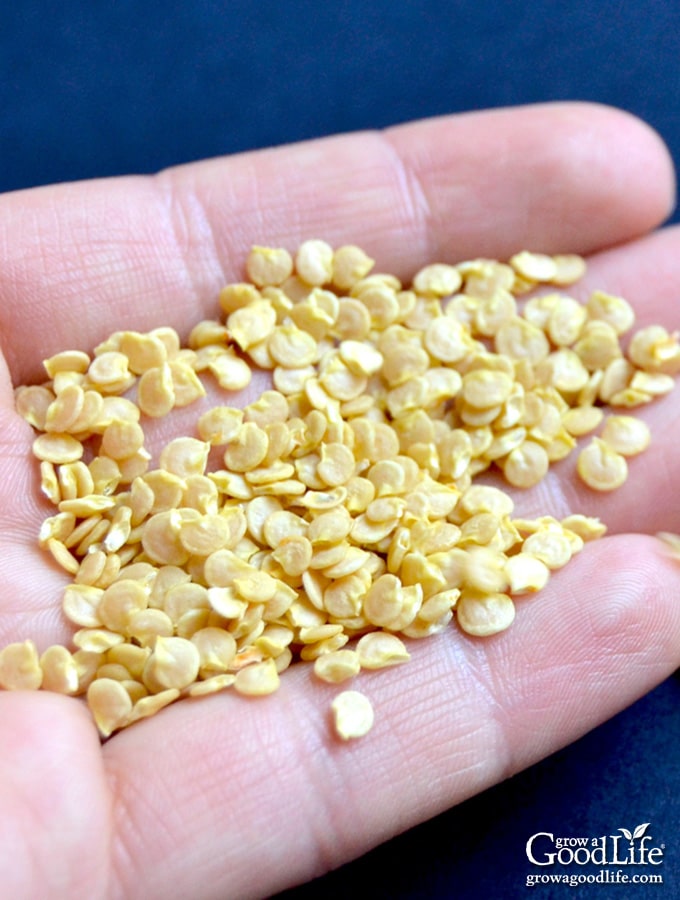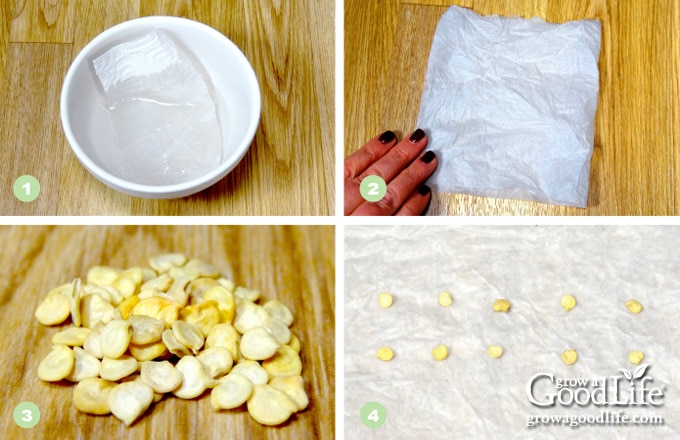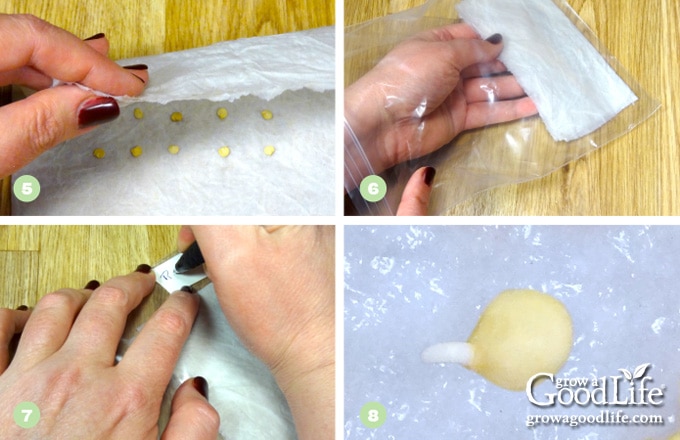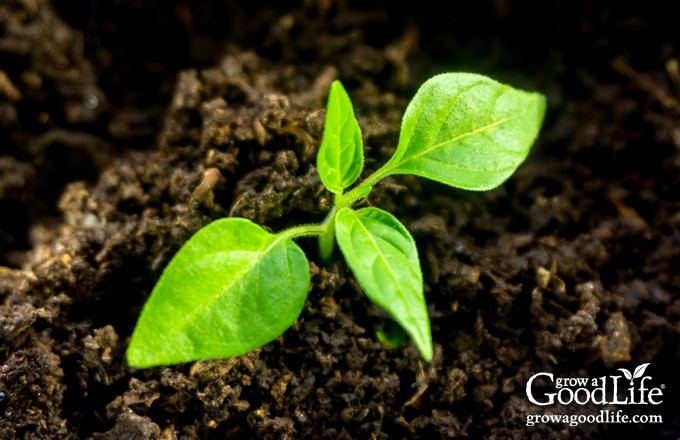Simple Seed Germination Test
This post may contain affiliate links, which means that I may receive a commission if you make a purchase using these links. As an Amazon Associate I earn from qualifying purchases.
Do you have old seeds from last year and wonder if they are still good? Try this easy seed germination test to find out if they are viable. See how to test your old seeds so you don’t waste time and effort sowing seeds that won’t grow.

As I eagerly wait for spring, and the stores begin to roll out their spring gardening and seed starting supplies, I find myself drawn to the seed displays. Before I know it, I usually have a few packages in my hands to purchase. I often end up with duplicate packages of seeds in my seed box.
How Long Will Seeds Last?
Luckily, depending on how the seeds are stored, most seeds can last several seasons or more. Seeds do lose potency over time and will have a decreased germination rate the older they are. Some seeds like onions and parsnips are not likely to sprout a second year. Even if they do germinate, they may not have the vigor to produce healthy plants like when they were new. When in doubt, it is best to purchase fresh seeds rather than jeopardize your crop’s success.
The seed viability list below will give you a general idea how long vegetable seeds will last:
- 1 Year: Leeks, onions, parsnips, and scallions
- 2-3 Years: Arugula, beans, carrots, celeriac, celery, corn, eggplant, lettuce, okra, peas, peppers, and spinach
- 3-4 Years: Artichokes, beets, broccoli, Brussels sprouts, cabbage, cauliflower, collards, kale, kohlrabi, mustard, pumpkin, radish, rutabagas, summer squash, Swiss chard, and winter squash
- 5-6 Years: Cucumbers, melons, tomatoes, turnips, and watermelons
Use this chart just as a guideline though. I have experienced onion seeds still sprouting after three years and lettuce seeds only lasting over one year. It all depends on the quality of seeds and how they are stored.
How to Store Seeds
Seeds will last longer if they are stored in a cool, dry, and dark location. Ideal temperatures are between 40 and 50 degrees F. I place my seeds in zipper bags and store them in plastic shoebox totes in a dim corner of the basement away from the furnace. If rodents are a problem, you can store seed packets in sealed glass jars.
How to Germinate a Seed
Seeds are dormant or inactive until conditions are right for germination. For a seed to sprout, it needs water, oxygen, and warmth. Some seeds also need light. The process of germination begins once a seed is exposed to the proper conditions. First, it absorbs moisture and oxygen, which triggers the embryo to grow and the seed coat to break down. Once this happens, the seed can draw in larger amounts of water and oxygen to grow roots, or radicles, followed by the shoot or plumule that contains the leaves and stem.
How to Do a Seed Viability Test
If you have older seeds, you may wonder if they are still good. Instead of taking a gamble, sowing the seeds, and waiting to see whether they will sprout, you can test them to see if they are viable using a seed germination test. To test seeds, we are going to germinate seeds in a paper towel, providing the environment it requires to sprout, including moisture, air, and warmth. Follow these steps to test your seeds to see if they are viable:
Step 1: Gather Your Supplies
For each type of seed you are testing, you will need plain paper towels cut in half, plastic zipper bags, a bowl of water, a marking pen, and seeds to test.
Step 2: Germinate Seeds in a Paper Towel
- Moisten a paper towel by dipping it into the bowl of water and squeezing out the excess moisture. The paper towel should be damp, but not dripping wet.
- Spread the damp paper towel out on a clean surface and fold in half.
- Select a minimum of ten seeds from the pack you are testing.
- Spread the seeds out on one-half of the towel, so they are not touching.

Step 3: Package Up the Seeds
- Fold the damp paper towel in half sandwiching the seeds between the two layers. Press down gently to make sure seeds come in contact with the moist paper towel.
- Place the paper towel and seeds in a plastic bag and seal it to keep it from drying out.
- Mark the bag with the date and variety of seed. Place the zipper bag in a warm place away from direct sunlight. Most seeds germinate in temperatures between 70 and 75 degrees F.
- Every three days, check to see if the seeds have sprouted. Re-moisten the paper towel if it dries out.

Step 4: Assess the Seed Germination Percentage
The estimated number of days for germination will be noted on the seed packet. After the predicted germination period, count the seeds that successfully sprouted and calculate the percentage that germinated out of the total tested. Example: if 9 out of 10 seeds sprout, you have 90% germination rate. These are good seeds that should grow healthy plants.
If the germination is greater than five sprouted seeds (50% percent) I will use the seeds knowing that I will have to pre-sprout the seeds or sow a little heavier to make up for the low germination rates.
I take the test further by planting the seeds that germinate so I can observe the seedlings as they grow. Poor quality seeds will either die quickly or produce weak, abnormal seedlings. If the plants are slow to grow or not healthy looking, I will throw them out and buy a fresh package. I want my seedlings to have the best shot at success.

After this simple, quick test, you will know if you need to buy new seed because the leftover seed will not sprout, or if you need to plant heavier to make up for the reduced viability.
Now that you have tested your seeds, you are ready to make a seed list and plan your garden.
You May Also Like:
- Tips for Buying Seeds for your Vegetable Garden
- How to Make a Seed Starting and Planting Schedule
- 10 Steps to Starting Seedlings Indoors
Good planning is key to a successful vegetable garden
Whether you are new to growing your own food or have been growing a vegetable garden for years, you will benefit from some planning each year. You will find everything you need to organize and plan your vegetable garden in my PDF eBook, Grow a Good Life Guide to Planning Your Vegetable Garden.


This is a great idea! Why didn’t I think of this, we have seeds we are uncertain of and I never thought to do this, thanks.
will this work for flower seeds as well?
Denise, Yes, it will 🙂
What a great way of doing this. I bet will really help someone out if they harvest the seeds from there crops to replant!
This is such a great idea! I just found some seeds I had held back and didn’t use last year. I was wondering if they would still be good. I guess now I can find out!
That is really helpful. So often I toss seeds because I don’t want to risk it. Now there is hope for those little seeds.
Seeds are pretty inexpensive. Still, I hate to throw away good seeds.
I never throw away seeds. I have a trash heap we call Marjorie (From Fraggle Rock-HBO)out in my vacant lot. It gets used sometime as a source of humus. I always sprinkle all my old seeds on the heap. A lot germinate. Whenever I have a hole to fill with some transplant I go out and harvest something to use. If a plant is a “volunteer” it is usually a very hearty plant.
I love this idea, Bruce! Thanks for sharing.
I have to admit that I’ve never been good about doing this. Which is probably why I get frustrated when seeds don’t germinate! LOL. However, I do pre-sprout a few veggies in paper towels like Artichokes or any other temperamental veggie to start from seed. There’s nothing more frustrating then having only 50% of your soil blocks or cells germinate.
Thomas, I like to know if my seed will sprout before placing my seed order. One year I ran around town looking for Anaheim Pepper seeds when my stash failed to germinate. I ended up with a brand that I wouldn’t normally buy. I also pre-sprout most of my other seeds too then move them to waiting soil blocks. It does help to eliminate the empty blocks in the tray.
Great tip! I guess I now have no excuse not to do this. It’s better than my normal practice of scratching the ol’ chin, and dumping about 6 seeds into a soil cube, figuring maybe one will make it.
Mike, I do sow older seeds heavier too but don’t like thinning them. I also try to pre-sprout my seeds on a paper towel, then transfer the sprouted seed to a soil block.
I should do this with my carrot seeds. But I rarely ever do. I tend to use the new packets as I don’t trust carrots. It just takes so long to get them up in the spring if they aren’t viable I’m so not happy. And strangely both packets of my three year old onion seed germinated very well. I was so shocked. Onion seeds aren’t supposed to last.
Daphne, I agree with you on the carrots. Even after testing the seeds and finding them viable, I still have problems getting them to all sprout in the garden. I was shocked by the onions too. In the past, I ended up with way too many onions because I felt the need to plant all the seed I had on hand or it would go bad.
I have seeds that are 4-5 years old. Thanks for the tip, that should keep me occupied for another week or two!
Granny, I like being able to start a few seeds early too. I need some green to tend to.
What a good tip.
Thanks Sue! I am pretty frugal when it comes to purchasing seeds and this has saved me from throwing out good seeds.